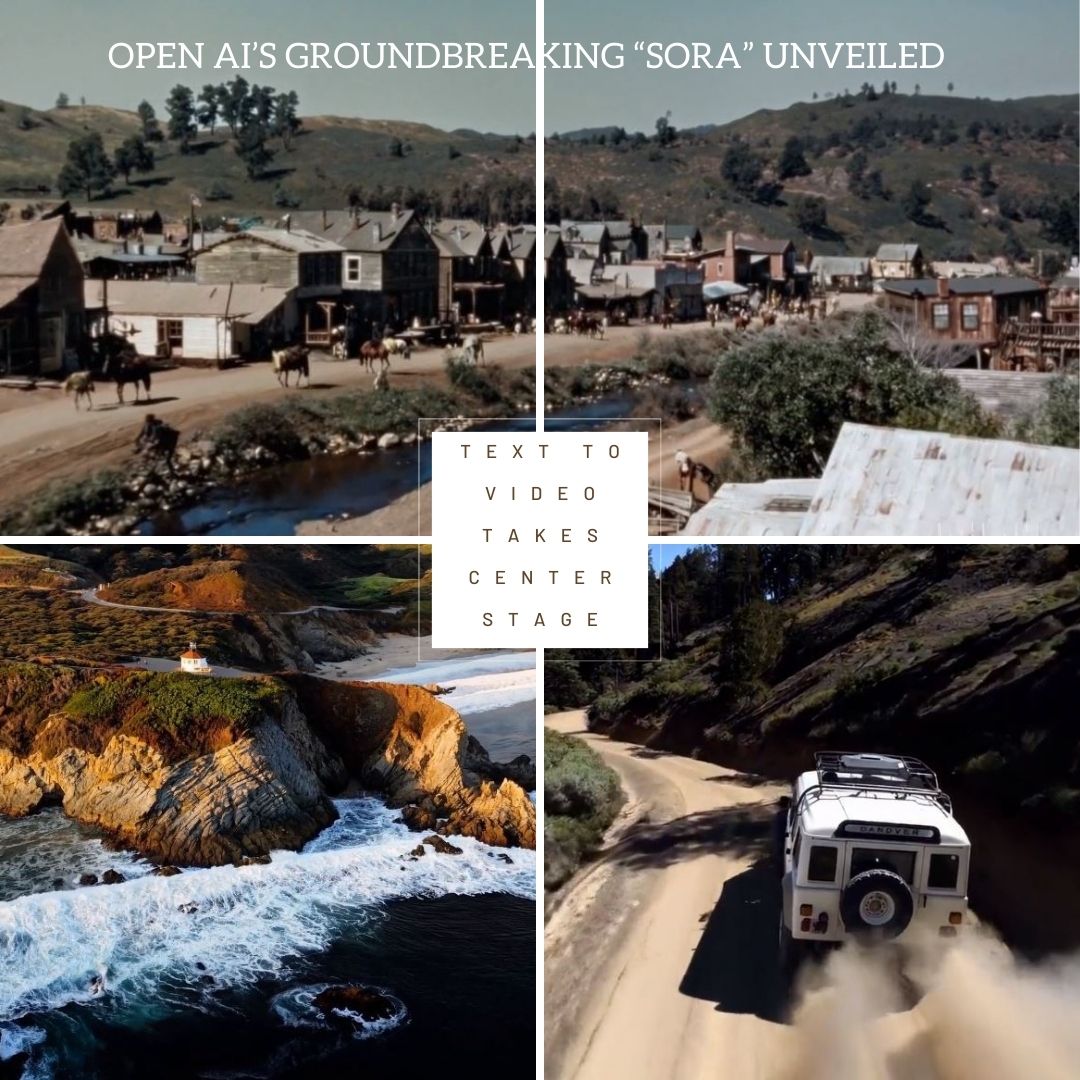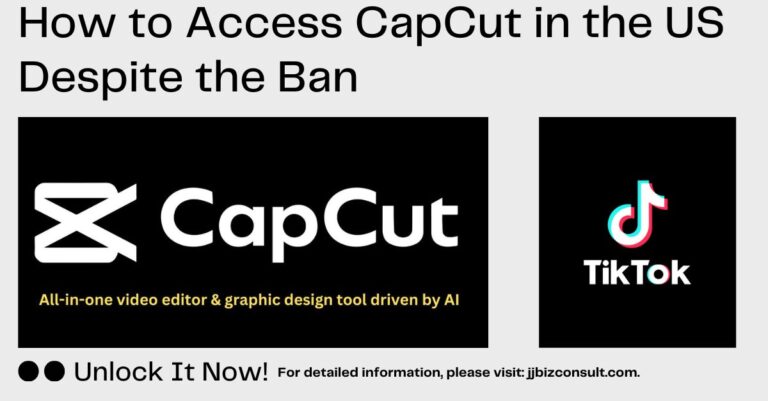
Text to Video Takes Center Stage: OpenAI’s Groundbreaking “Sora” Unveiled
Text to Video Takes Center Stage: OpenAI’s Groundbreaking “Sora” Unveiled! Visualize the possibilities! To enhance your understanding of the prompts discussed, I’ve curated a selection of captivating videos created by OpenAI’s Sora. Watch these video examples (Sora website) and witness the power of text-to-video firsthand.
Introduction
OpenAI, a pioneer in artificial intelligence technology, has recently unveiled its latest software protege: Sora. This generative AI model has the remarkable ability to transform short text descriptions into vividly realistic video clips. In this blog post, we’ll delve into the fascinating world of Sora, exploring its capabilities, applications, and impact on the field of AI.
Meet Sora: The Text-to-Video Model
Sora is a large-scale AI model designed by OpenAI. Its primary function is to take a user’s text prompt and convert it into a 60-second high-fidelity video. Imagine typing a few lines of descriptive text, and within moments, witnessing a lifelike video clip that brings your words to life.
How Sora Works
- Text Input: Users provide a concise text description.
- AI Magic: Sora processes the input and generates a video with highly detailed scenes, complex camera motion, and vibrant characters.
- Result: The output is a visually stunning 60-second video that seamlessly translates the text prompt into a captivating visual experience.
Examples of Sora’s Capabilities
Let’s explore some examples of what Sora can achieve:
1. Snowy Tokyo City
Text Prompt: “Beautiful, snowy Tokyo city is bustling. The camera moves through the bustling city street, following several people enjoying the beautiful snowy weather and shopping at nearby stalls. Gorgeous sakura petals are flying through the wind along with snowflakes.”
Result: The video clip takes us on a cinematic journey—a bird’s-eye view of a couple holding hands, wrapped in winter clothes, strolling past shops on a snowy yet cherry blossom tree-lined street. In the distance, the cityscape unfolds.
2. Technical Details
Sora’s magic lies in its training process. OpenAI trains text-conditional diffusion models jointly on videos and images of varying durations, resolutions, and aspect ratios. The results indicate that scaling video generation models holds promise for building general-purpose simulators of the physical world.

Beyond Text: Sora’s Versatility
While Sora excels at text-to-video conversion, it’s not limited to text prompts alone. It can also generate video from other inputs, such as pre-existing images or video clips. This versatility enables Sora to perform a wide range of tasks, including:
- Creating perfectly looping videos
- Animating static images
- Extending videos forwards or backwards in time
User Reactions
Social media users have been buzzing about Sora’s capabilities. Comments like “world-changing work” and “flipping spectacular” flood the profiles of tech enthusiasts and AI developers. However, OpenAI acknowledges that Sora still has limitations, especially in accurately modeling complex physics interactions. For instance, glass shattering or realistic food consumption remains a challenge.
What is the future of text to video technology?
The future of text-to-video technology holds immense promise and is poised to revolutionize various industries. Let’s explore some exciting possibilities:
- Enhanced Content Creation:
- Content creators will benefit from streamlined workflows. Imagine writing a script or a short description, and an AI like Sora instantly generates a video that aligns with the vision.
- Marketing campaigns can become more dynamic, with personalized videos tailored to individual customers based on their preferences and behavior.
- Education and Training:
- Interactive learning materials: Text-to-video technology can transform educational content. Imagine textbooks coming alive with animated explanations, historical reenactments, and scientific simulations.
- Virtual training: Employees can receive realistic training scenarios through video simulations, enhancing their skills and knowledge.
- Entertainment and Gaming:
- Immersive storytelling: Authors can create interactive narratives where readers influence the plot by providing text prompts. The AI generates corresponding video segments, making the story come alive.
- Video games: Game developers can dynamically generate cutscenes based on player choices, creating personalized gaming experiences.
- Real Estate and Architecture:
- Virtual property tours: Instead of static images, potential buyers can explore properties through dynamic videos. Sora could transform property descriptions into captivating walkthroughs.
- Architectural visualization: Architects and designers can present their concepts in video form, allowing clients to visualize spaces before construction begins.
- Healthcare and Medicine:
- Patient education: Medical professionals can use text-to-video tools to explain complex procedures, diseases, and treatment options to patients.
- Training medical staff: Simulated surgeries and patient interactions can enhance medical training.
- News and Journalism:
- Automated news summaries: Text-to-video models could summarize news articles into engaging video clips, making information more accessible.
- Visualizing data: Complex data sets can be transformed into visual narratives, aiding understanding and retention.
- Social Media and Influencer Marketing:
- Personalized video content: Influencers can create videos based on fan interactions. A simple tweet could turn into a personalized video response.
- Dynamic ads: Advertisers can generate video ads on the fly, adapting to real-time trends and user preferences.
- Challenges and Ethical Considerations:
- Quality control: Ensuring that generated videos are accurate, unbiased, and high-quality remains a challenge.
- Privacy: Balancing creativity with privacy concerns—especially when using personal data—requires careful handling.
- Misuse: Like any technology, text-to-video tools can be misused for misinformation, deepfakes, or harmful content.
In summary, the future of text-to-video technology is bright, but responsible development and ethical guidelines are crucial to harness its full potential.
Can anyone use Sora Text to Video
Certainly! Sora is designed to be accessible to a wide range of users. Whether you’re a content creator, filmmaker, educator, or simply curious about cutting-edge technology, you can explore and utilize Sora’s capabilities. Keep in mind that while Sora is powerful, it’s essential to understand its limitations and use it responsibly. As OpenAI continues to develop and refine Sora, we can expect even more exciting applications in the future! 🌟🎥
What are some of Text to Video Sora’s current limitations?
While Sora is a powerful tool, it does have some limitations. Here are a few:
- Contextual Understanding: Sora’s ability to understand context and maintain coherent conversations is still a work in progress. It might occasionally misinterpret user queries or provide responses that lack context.
- Accuracy and Factual Errors: Although Sora strives for accuracy, it can still make factual errors or provide outdated information. Users should verify critical details independently.
- Subjective Content: Sora doesn’t form subjective opinions. Its responses are based on patterns in the data it was trained on, which may not always align with individual preferences or beliefs.
- Sensitive Topics: Sora avoids discussing sensitive topics, including personal information, mental health, and controversial subjects. It prioritizes safety and positive interactions.
- Creativity and Originality: While Sora can generate creative content, it relies on existing knowledge. Truly original ideas or groundbreaking insights may be limited.
- Multilingual Limitations: Although Sora can communicate in multiple languages, its proficiency varies. It’s most effective in English but may struggle with less common languages.
Remember that Sora is continually evolving, and OpenAI actively works to address these limitations. As users, we can explore its capabilities while being mindful of its boundaries. 🌟
Conclusion – Text to Video
OpenAI’s Sora represents a significant leap in AI creativity and practicality. As it continues to evolve, we can expect even more mind-bending applications. Whether you’re a content creator, filmmaker, or simply curious about cutting-edge technology, keep an eye on Sora—it’s rewriting the rules of video generation.
Stay tuned for more updates as Sora’s journey unfolds!
Unveiling AI Chatbot Girlfriend: Companionship in the Digital Age





